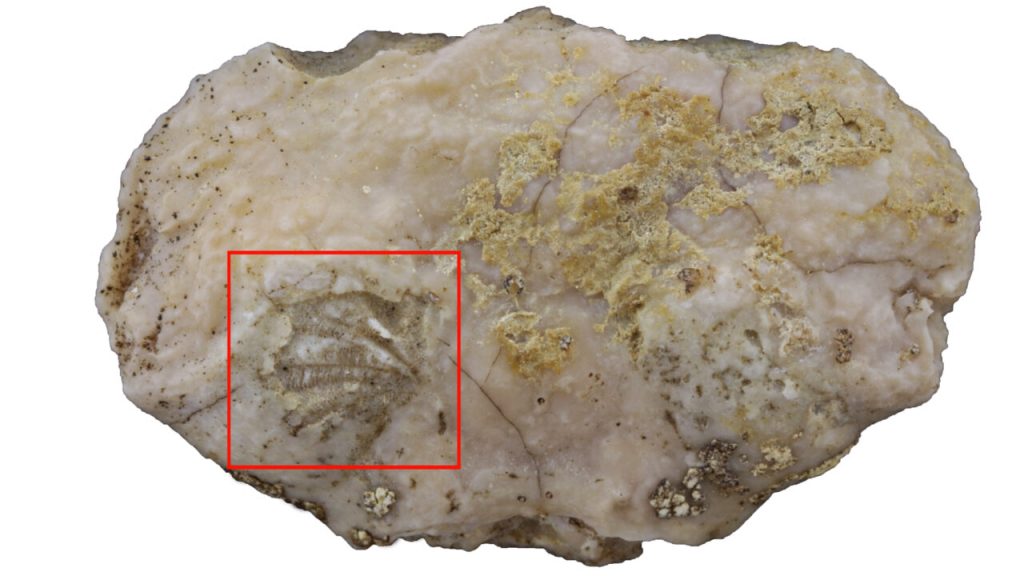From the UA News Center | Most animals and plants never fossilize. For those that do, it’s usually only hard parts such as bones and shells that preserve.

However, in some exceptional cases, soft tissues such as muscles and gills survive the fossilization process and can present a wealth of information about the biology and ecology of ancient organisms.
In a recently published paper, Dr. Adiel Klompmaker, University of Alabama Museums’ curator of paleontology, and colleagues reported on a remarkable crab with multiple mineralized soft tissues preserved. This crab lived 75 million years ago during the Cretaceous in the area of present-day South Dakota in an ancient sea known as the Western Interior Seaway.
The crab fossil was collected between 2012–2018, but its importance only became clear when Klompmaker studied the specimen in July 2019.
“I could not believe my eyes when I saw the specimen for the first time,” Klompmaker said. “I grabbed my hand lens to check and, indeed, the crab showed mineralized gills through the broken shell of the crab. I reviewed a paper on fossil gills in a crab a couple of years earlier, so I recognized the gills immediately.”
Prior to the new paper, only four other fossil crab specimens had gills preserved.
After the gill discovery, co-author Dr. Peter Kloess of Whittier College and the University of California Museum of Paleontology put the crab into a microCT scanner.
“I’ve used microCT scans to pick up microscopic details in previous specimens and we anticipated to see these gills in higher resolution than the naked eye,” says Kloess.
“While the gills did not show up, we identified other soft tissues such as the foodpipe leading to a stomach,” Klompmaker mentioned.
The crab jaws — or mandibles — also showed up. The overall shape and location of soft tissues within the crab are not unlike modern crabs. Stomach contents have not been recovered thus far.
Despite the presence of very rare soft tissues, the team could not identify the species of crab.
“We can only identify the genus, Secretanella, because diagnostic features of the shell such as spines are not preserved,” Klompmaker mentioned. “For taxonomy, the preservation is not that good actually.”
A third and final surprise came when the team was writing the scientific paper. The crab was found in limestones representing an ancient methane cold seep. At these locations, methane bubbles come up from the sea bottom and often support a diverse ecosystem of clams, ammonites, snails, worms, sea stars, crustaceans, corals, moss animals and fishes.
“When we searched the literature for preserved soft tissues from any animal living in ancient methane seeps, we found exactly none,” Klompmaker said. “Now that we know soft tissues can preserve in these environments, we would expect to find more fossils with mineralized soft tissues.”
The remarkable crab specimen with soft tissue preservation is reposited in the Alabama Museum of Natural History collection, where it will remain available for subsequent studies.